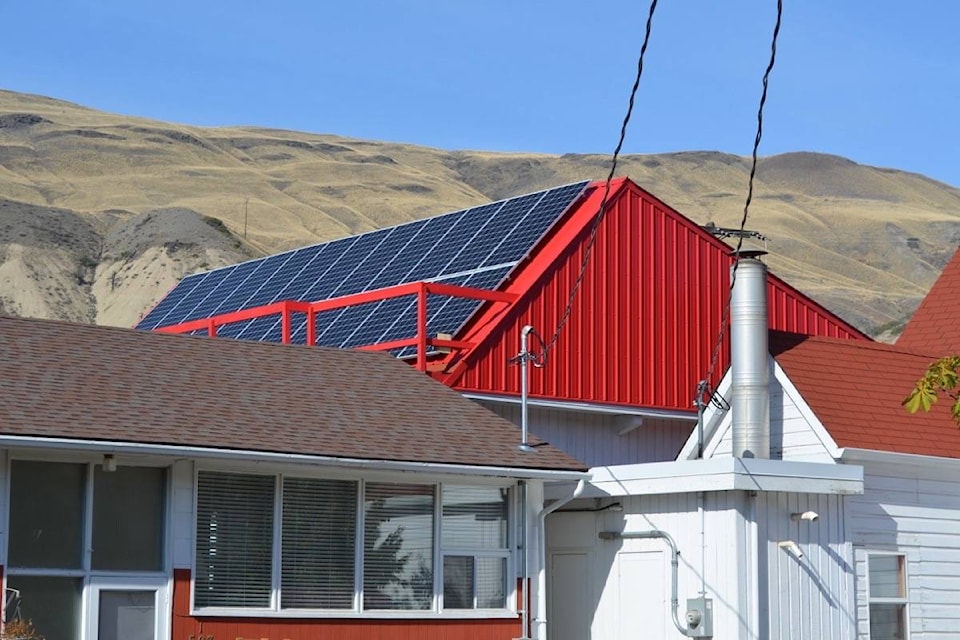One of the oldest buildings in Ashcroft is now sporting a very modern addition.
St. Alban’s Anglican Church (built in 1891) now has an array of solar panels on its roof, and congregation member David Durksen—who, along with parishioner Daniel Collett, first proposed solar panels for the building—says that the building should, over the course of a year, generate all its own electricity needs, with perhaps a slight surplus.
“Because BC Hydro approved us for an eight kilowatt system we should be grid-positive,” says Durksen. “We’ll generate all the electricity needed for St. Alban’s and contribute some to the grid as well.
“On sunny days we’ll put energy into the grid, on cloudy days we’ll generate most of what we need, and on stormy days we’ll be drawing on the grid, but we expect that on average we’ll put more into the grid than we take out.”
Durksen says that at the end of the first year of going live they should be grid-positive, and that if they are they might have the capacity to put in an electric vehicle charging station at the church.
“We’re looking at that option. We’d have to do a costing and find the money for it.”
READ MORE: St. Alban’s celebrates 125th anniversary
The church had a tar and gravel roof that was nearing the end of its life, and three or so years ago the congregation looked at the cost of having it replaced. They also looked at the cost of a metal truss roof, and found there was little difference between the two.
“We thought ‘Hold on, why are we doing this?’” Durksen says of the tar and gravel option. “The metal roof would last 50 to 100 years, and the tar and gravel would last about 15 years. That meant we’d have to replace the tar and gravel roof at least four times during the life of the metal one.”
The group was already considering solar panels, and had talked to a solar contractor, who explained that the panels would be installed on small racks on the roof. It meant that if they went ahead with tar and gravel, the whole array would have to be dismantled every time the roof was re-done.
“It just made sense” to go ahead with the metal roof, so trusses were designed. However, Durksen says that the weather last year conspired to make them go ahead with the new roof sooner than anticipated, when two fierce gales ripped through the area. They lifted part of the tar and gravel roof, and rain began leaking into the church hall.
After the storm the church immediately ordered the trusses. Volunteers erected the new roof, and a contractor installed the metal panels, with members and friends of St. Alban’s contributing the money for the project.
At the same time, the congregation applied to the Anglican Foundation of Canada for funding so that the solar panels could be added, and received a generous grant that allowed them to go forward with the solar installation late last month.
“We really appreciated the support of the Anglican Foundation,” says Durksen.
The solar array is the latest step in the journey for St. Alban’s to become a sustainable ministry and work towards a greener and more sustainable world. In 2016 new LED lighting was installed in the church hall, which reduced hydro consumption by seven per cent on an annual basis. New high-efficiency furnaces were also installed, and the reduction in gas billing was more than 10 per cent.
When the new roof was constructed in September 2018, volunteers installed R40 insulation, which reduced the church’s hydro and gas consumption by a further 10 per cent. An update on the results of the solar energy production will be provided in 12 months’ time.
editorial@accjournal.ca
Like us on Facebook and follow us on Twitter
